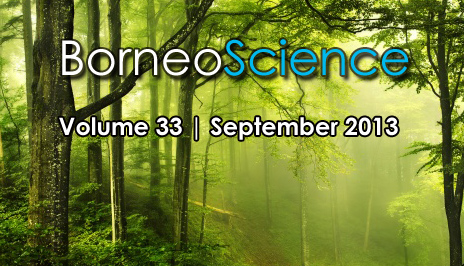Fatma Sabariah Alias, Latifah Abd Manaf*, Mariani Ho Nyuk Onn @Ariffin,
Sabrina J. Ho Abdullah
Faculty of Environmental Studies,
Universiti Putra Malaysia, 43400 Serdang, Selangor
E-mail: latifahmanaf@upm.edu.my
ABSTRACT. As urbanisation continues takes place, the management of solid waste is becoming a major environmental and public health problem in urban areas. In 2013, solid waste generation in Sabah was 2,062 390 kg/day where the values increase year by year where the waste generation rate in Sabah is 0.7 kg/capita. The amount will keep increasing without the improvement of linkage between government, local councils, collection service providers, traders, recycling centre operators, non-governmental organizations and related stakeholder in planning a proper solid waste management. This paper presents an overview of the solid waste management practices and challenges in Sabah respectively. There are about 23 local authority which responsible in collecting of municipal solid waste from commercial, institutional and residential areas, sweeping of roads and footways, beach and river cleaning and minimization of waste. The solid waste management is involved generation, storage, collection, processing, transfer and transport, disposal and treatment. However, uncollected area, immigrants, squatter villages and lack of human resource and finance has become the challenges to local authority in handling the solid waste management. Thus, solid waste should be manage efficiently due to sustainable environment and create a better quality life.
KEYWORDS. Solid waste, waste generation rate, local authority, solid waste management practices, challenges
REFERENCES:
-
Agamuthu, P., Fauziah, S. H., Khidzir, K. M., Aiza Noorazamimah. 2007. Sustainable Waste Management-Asian Perspectives Proc. International Conferences on Sustainable Solid Waste Management, 5-7th Sept, 2007, Chennai, India. Pp. 15-26.
-
Chua, K. H. 2006. Effort and Initiatives to Enhance Cleanliness in the City of Kota Kinabalu. Paper presented at the Fourth Sabah-Sarawak Environmental Convention, Le Meridien Hotel, Kota Kinabalu, Sabah, 5th Sept 2006.
-
DOS. 2010. Population Distribution by Local Authority Areas and Mukims.http://www.statistic.gov.my|http://www.statistic.gov.my accessed on 25 July 2013.
-
Eric, J., Yabi, Y., & Carsten, H. L. 2000. A Report on the State of the Environment in Sabah 2000. State Environment Conservation Department Sabah. Paper presented at the Environmental Convention Kuching, Sarawak. 29-30 June 2000.
-
EPU. 2006. Ninth Malaysian Plan 2006-2010, Chapter 19: Energy and Chapter 21: Urban Services, The Economic Planning Unit. Prime Minister’s Department, Putrajaya.
-
HMGN & MoPE, 2003. Nepal Population Report 2060. Published by His Majesty’s Government of Nepal (HMGN), Ministry of Population and Environment (MoPE) in Nepal.
-
Juin, E. 2001. Keynote Address on Environmental Management in Sabah: Issues and Challenges. Paper presented at the 6th Sabah Inter-Agency Tropical Ecosystem Research Seminar. 13-14 Sept 2001. Kota Kinabalu.
-
Kota Kinabalu City Council http://www.dbkk.gov.my|http://www.dbkk.gov.my accessed on 1 August 2013
-
Latifah, A. M., A., Samah. M.A.A., & Nur IIyana M. Z., 2009. Municipal Solid Waste in Malaysia; Practices and Challenge. Journal Waste Management, 29: 2902-2906.
-
Law of Malaysia Act 672. 2007. Solid Waste and Public Cleansing Management Act 2007. National Solid Waste Management Department.
-
Lim, P. S., Mohd Iskandar, M. A., & Laugesen, C. H. 2002. Solid Waste Disposal in Sabah; Survey Report. Environmental Conservation Department, Sabah.
-
LGD. 2005. National Strategic Plan for Solid Waste Management. Ministry of Housing and Local Government.
-
Mohammad Raduan Mohd Ariff, 2000. Strategi Pembangunan dan Pola Perubahan Petempatan Kampong Air di Pulau Borneo. Beriga, 68: 41-59.
-
Ministry of Housing and Local Government, 2013. Statistic on Average of Solid Waste Generation in Each State. http://www.kpkt.gov.my|http://www.kpkt.gov.my accessed on 15 October 2013.
-
Ministry of Housing and Local Government, 2013. Landfill Site by State (Operating and Non Operating. http://www.kpkt.gov.my|http://www.kpkt.gov.my accessed on 15 October 2013.
-
NSD. 2012. Strong Economic Growth for Sabah. http://www.statistic.gov.my|http://www.statistic.gov.my accessed on 5 July 2013.
-
Ramachandra, T. V., & Saira, V. K. 2004. Environmentally Sound Options for E-Waste Management. Envis Journal of Human Settlements, 5 March.
-
Sakawi, Z. 2011. Municipal Solid Waste Management in Malaysia: Solution for Sustainable Waste Management. Journal of Applied Sciences in Environmental Sanitation, 6 (1): 29-38.
-
STB. 2007. Sabah Visitor Arrival by Nationality. http://www.sabah.gov.my|http://www.sabah.gov.my accessed on 15 September 2013.
-
Sandakan Municipal Council. 2010. (Anti-Litter) By-Laws, 1984, repealed by Uniform (Anti- Litter) By-laws, 2010. http://www.mps.gov.my|http://www.mps.gov.my accessed on 1 August 2013.
-
Tawau Municipal Council. 2010. (Anti-Litter) By-Laws, 1984, repealed Uniform (Anti-Litter) By-Laws, 2010. http://www.mpt.gov.my|http://www.mpt.gov.my accessed on 1 August 2013.
-
Tchobanoglous, G. H., & Theisen, S. A. 1993. Integrated Solid Waste Management: Engineering Principles and Management Issues. McGraw Hill International Editions, Civil Engineering Series 6. Mcgraw Hill Inc., Singapore.
-
Tarmudi, Z., Lazim. M. A., & Abu Osman, M. T. 2009. An Overview of Municipal Solid Wastes Generation in Malaysia. Jurnal Teknologi, 51 (F): 1-15.

